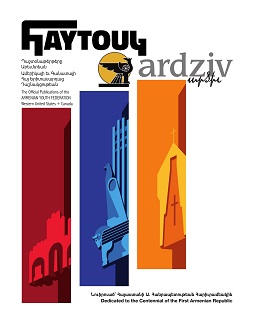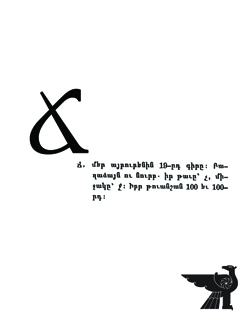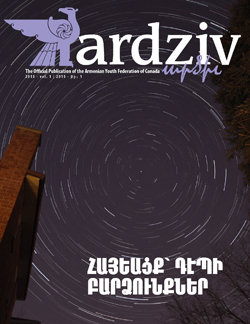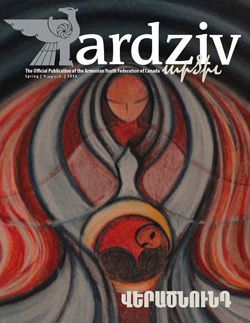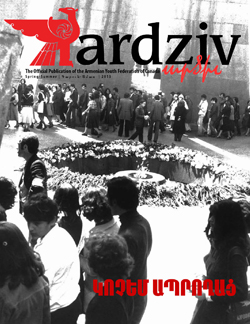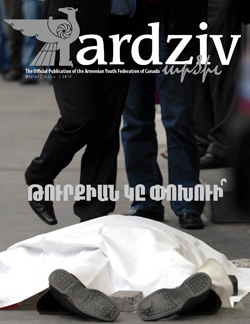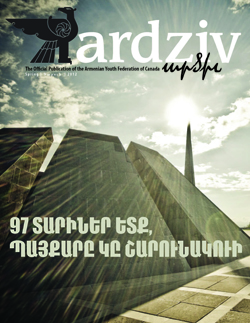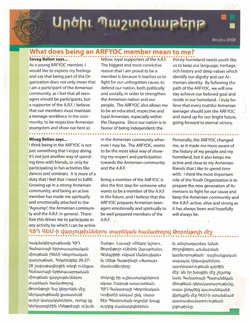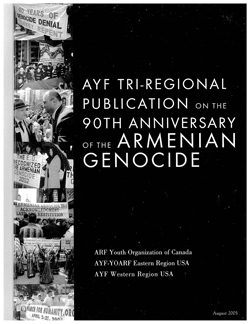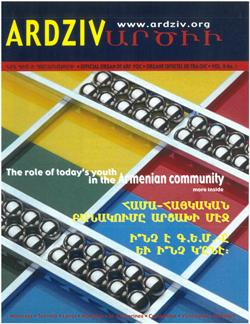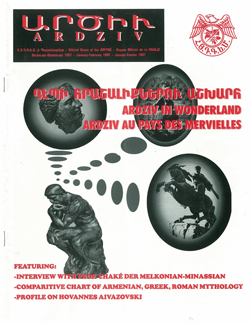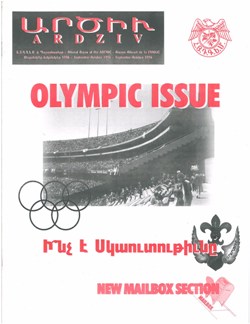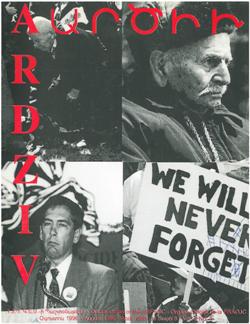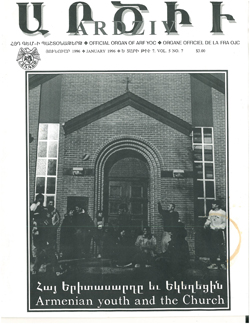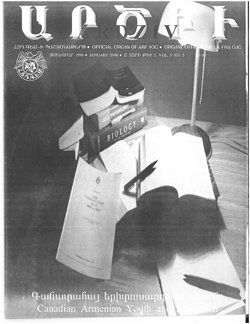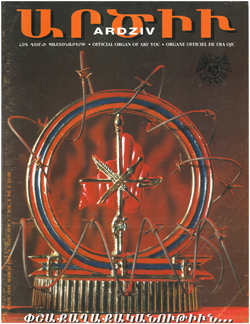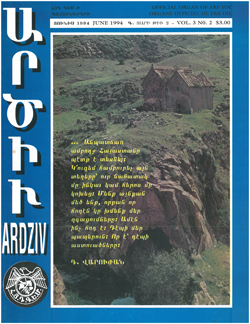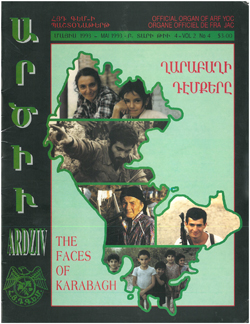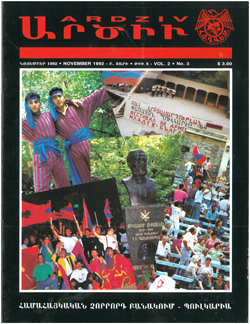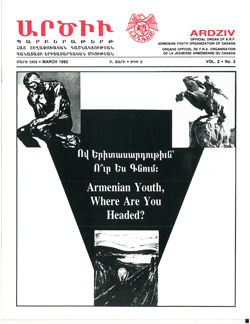Understanding Genocide
By: Rupen Janbazian | Posted on: 11.07.2012Warning: Undefined array key "ssba_bar_buttons" in /home/u108981792/domains/ardziv.org/public_html/wp-content/plugins/simple-share-buttons-adder/php/class-buttons.php on line 602
Warning: Undefined array key "ssba_bar_buttons" in /home/u108981792/domains/ardziv.org/public_html/wp-content/plugins/simple-share-buttons-adder/php/class-buttons.php on line 602
Warning: Undefined array key "ssba_bar_buttons" in /home/u108981792/domains/ardziv.org/public_html/wp-content/plugins/simple-share-buttons-adder/php/class-buttons.php on line 602
Warning: Undefined array key "ssba_bar_buttons" in /home/u108981792/domains/ardziv.org/public_html/wp-content/plugins/simple-share-buttons-adder/php/class-buttons.php on line 602
The study of genocide is a challenging one; it is surrounded with harrowing, disturbing realities, and is full of many indefinite grey-areas. While it is difficult to handle the subject matter without dealing with the horrors associated with it, several scholars and experts have provided their own understandings and definitions of genocide, in order to make a more clear-cut characterization of the sometimes-hazy term. Renowned genocide scholars Frank Chalk and Kurt Jonassohn are the founding co-directors of the Montreal Institute of Genocide and Human Rights Studies (MIGS). In their studies, the two have put forward their own definition of genocide and identified four macro-level motives that may lead perpetrators to commit the crime. Using the examples of the Armenian Genocide and the Jewish Holocaust, this study will first apply Chalk and Jonassohn’s four points to each case, and later draw conclusions on its effectiveness in defining a case as genocide.
Chalk and Jonassohn’s first two points refer to the macro-level motive “to eliminate a real or potential threat” and “to spread terror among real or potential enemies”, both of which clearly existed in the case of the Armenian Genocide. Genocide scholar Rouben Peter Adalian has outlined five major reasons why the genocide against the Armenian population took place. One of the reasons he provides points to the rapid modernization experienced by the Armenian population. He explains that the Armenians were more open to European concepts and customs, and that the leaders of the Ottoman Empire saw their interests, “more in alignment with countries they regarded as infidels than with the state ruling them”. [1] Moreover, when the Armenian population within the empire began to have national aspirations, the Ottoman officials regarded it a much more serious threat than similar nationalist movements that had arose earlier.[2] This was due to the fact that the Ottomans had come to regard historic Armenia as a part of their permanent control, since the Armenians had long been ruled by the Turks, and become widely dispersed by the early 20th century. Many have also come to argue that the national revolutions were merely small uprisings, which the Ottoman authorities used as an excuse to attack the wider Armenian public. While the Armenians posed no real, direct threat and were not considered real enemies of the state, the crumbling Ottoman leadership used the potentiality of both points in their campaign against the Armenian population.
Both of these points existed in the case of the Holocaust. In the genocide against the Jews committed by Nazi Germany, Hitler and his Nazi party’s anti-Semitism, became intensified by the Bolshevik revolution in Russia, Germany’s losses in WWI, and the revolt by German Communists in 1919. As a result, the Nazi’s began associating the Jewish population with the alleged “stab in the back” of the German army, and began accusing the Jews, blaming problems on a Jewish world conspiracy.[3] Jews were explicitly described as a threat to German superiority and an enemy of the country’s ideals. Similar to the Armenians in the Ottoman Empire, the Jews posed no real danger to the country. Nazi anti-Semitism ideology looked to “blame” the Jewish population and create a society that looked to them as the adversary of the German nation.
Chalk and Jonassohn’s third and fourth points describe the macro-level motive to acquire economic wealth and to implement a belief, a theory or an ideology. In the case of the Armenian Genocide, both of these points are clearly evident. The genocide against the Armenian population came at a time when the Ottoman Empire was ready to crumble; the once-powerful empire was in decline, provoking deep desperation and humiliation among Turkey’s would-be revolutionary modernizers.[4] In spite of the many difficulties they endured, the Armenian population of the Ottoman Empire flourished and had established a prosperous middle class by the 19th century.[5] In the aftermath of the genocide, a mass sequestration and confiscation of Armenian property by the Young Turk regime took place. In some cases, even ordinary Turks were granted once-Armenian property for their micro-level progress during the genocide.[6] The motive of the Young Turk officials went beyond economic wealth, however. Coming to Chalk and Jonassohn’s last point, the CUP (Committee of Union and Progress) officials had become a xenophobic group, “intent on pursuing a policy of racial exclusivity”.[7] The Armenian population did not “fit into” the empire the Young Turks wished to attain; a Turkish empire for Turks. As Christians, the Armenians found themselves in a very vulnerable position in the very Turkish and Muslim Ottoman realm.[8] The CUP leadership had a Pan-Turkic ideology, and the Armenians simply did not belong.
The notions of economic and ideological motives existed in the Jewish Holocaust example as well. Much like the Armenians in the Ottoman Empire, the Jewish population in Germany had faced much discrimination and prejudice, ultimately overcoming difficulty and establishing a flourishing, successful community. However, these successes were used as a “blame-tactic” by the Nazi’s, portraying the Jews as corrupt and predatory materialists.[9] Anti-Jewish Nazi rhetoric came at a time of great desperation within the German population; unemployment was higher than ever before and as a result of German defeat in WWI, there existed a heightened sense of deprivation. Public support for the Nazi’s came with the German people’s desire to a new approach to economic problems. This created the ideal environment for the Nazi’s to preach their anti-Semitic ideology, as the economic and political situation of the country allowed for the blame of a lack of work and loss of wealth to be put on the Jews.
Among historians and scholars, the Armenian Genocide is widely considered the first genocide of the 20th century, while the Holocaust of the Jews is regarded as the most studied and well-known example of genocide in modern times. Taking into consideration that all four motives that may lead perpetrators to commit the crime, as outlined by Frank Chalk and Kurt Jonassohn, apply to both examples, it can be concluded that the model is an effective tool to define a case as genocide. However, bearing in mind that genocide is a complex, multifaceted crime, there may be both historic and future cases of genocide that do not necessarily “meet every criteria” of the outlined definition. The Chalk/Jonassohn model is one of several scholarly definitions of genocide, which reflect the ambiguity and vague nature of the definition of genocide according to the United Nations Genocide Convention in 1948, where the word coined by Raphael Lemkin was first used.[10] Nonetheless, the definitions put forth by genocide scholars help both the academic world and the general public form a better understanding of the crime, in order to prevent future cases of genocide.
[1] Rouben Paul Adalian. “The Armenian Genocide.” Century of Genocide: Critical Essays and Eyewitness Accounts. Ed. Samuel Totten, William S. Parsons. New York: Routledge, 2009. p. 60.
[2] Adalian, p. 67.
[3] Adam Jones. Genocide: A Comprehensive Introduction. Abindgdon: Routledge, 2011. p. 132.
[4] Jones, p. 151.
[5] Adalian, p. 63.
[6] Ibid., pp. 57-58.
[7] Ibid., p. 56.
[8] Jones, p. 151.
[9] Ibid., p.132.
[10] Jones, pp. 10-12.










